If you were born in a century beginning with a “19” then you likely have a box or two or twelve like I do in my closet. A box full of old photo albums, or boxes of print photos. All memories. All un-digitized. Or the better ones hanging on a wall, stuck inside glass.
I’ve done my share of scanning with a flatbed scanner or trying to get a quality re-image with my DSLR,a process t-e-d-i-o-u-s enough to discourage you from ever opening that box again.
There might be an answer. With a device that is right in your pocket. Check out the Google PhotoScan app (iOS and Android)
Photos from the past, meet scanner from the future.
So quaint. “People took real photos”.
You can read some reviews on web sites, or wade through the app reviews (no choral harmony there). Or try it. I opted for the latter.
This is the process.
- Pick out an old photo (no not that one, do not put that one on the internet!)
- Sit it on a flat surface, but do not worry (I did mine on a bed spread covered with dog hair). Best with good natural light on it.
- Fire up the app.
- Center the photo, press the button
- Move the camera until the center circle overlaps the 4 corner circles presented
It offers to save them to a Google Photos app (which I do not have) which I guess would upload to the Goggle in the Cloud. I just saved mine to my iPhone camera roll.

That’s it.
The app does some magic to assemble 5 images into one, remove everything outside the image, and correct glare. For doing this off of a phone, hand held, unaligned, is stunning.
I did nine photos in about 15 minutes.

flickr photo shared by cogdogblog under a Public Domain Dedication Creative Commons ( CC0 ) license
This drawing by a friend of my old dog Mickey was from a framed photo.

flickr photo shared by cogdogblog under a Public Domain Dedication Creative Commons ( CC0 ) license
There it is, the mid 1970s, and I am in my bar mitzvah suit.
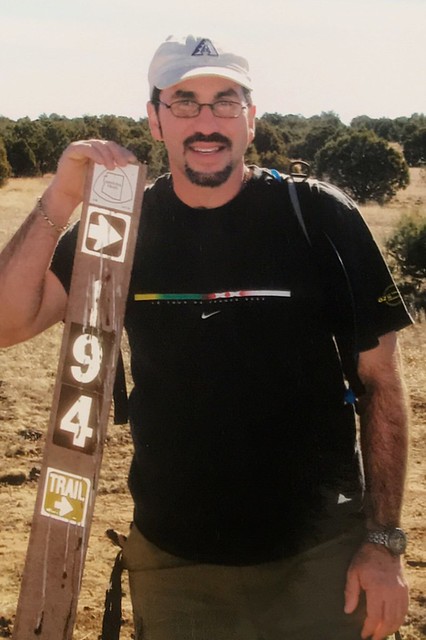
flickr photo shared by cogdogblog under a Public Domain Dedication Creative Commons ( CC0 ) license
My goatee era, hiking near Strawberry, likely around 2003 or 2004.
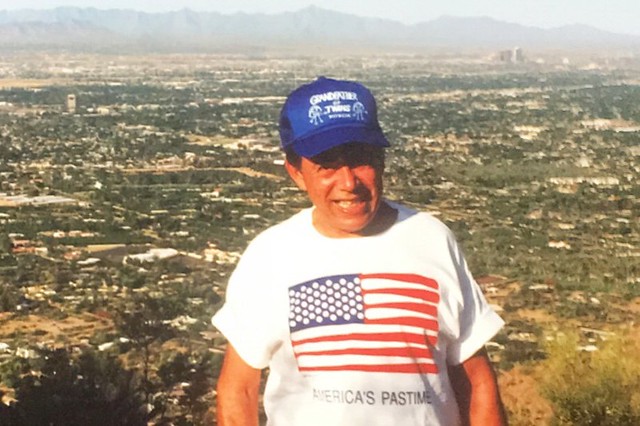
flickr photo shared by cogdogblog under a Public Domain Dedication Creative Commons ( CC0 ) license
My dad atop Camelback Mountain, for my wedding in 1992.
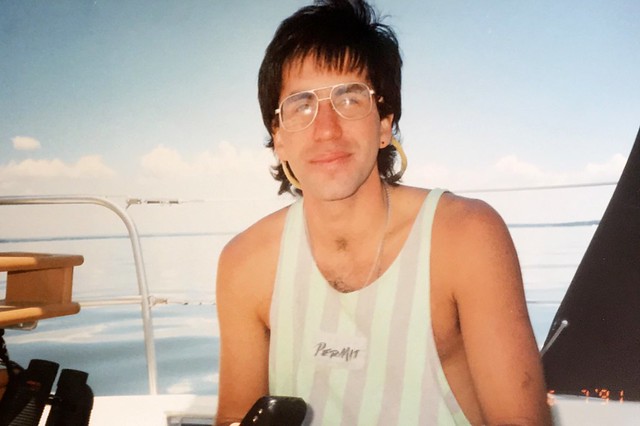
flickr photo shared by cogdogblog under a Public Domain Dedication Creative Commons ( CC0 ) license
Oh my big poofy hair and glasses! This is aboard my sisters sailboat, maybe mid 1990s. A bit distortion from the curvature of the image.
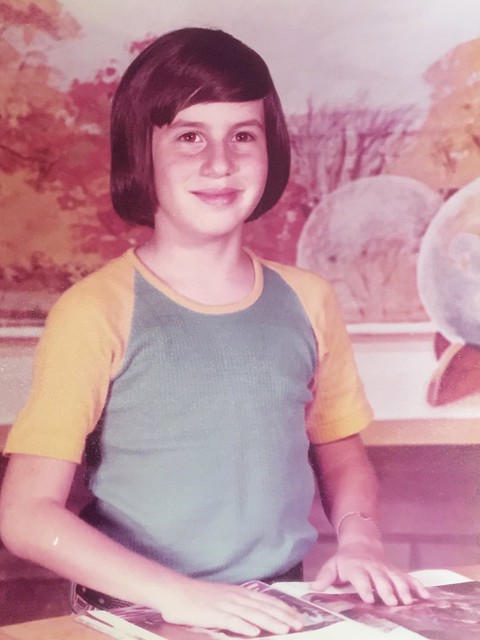
flickr photo shared by cogdogblog under a Public Domain Dedication Creative Commons ( CC0 ) license
There I am, fourth grade, eager to learn. Oh the hair.

flickr photo shared by cogdogblog under a Public Domain Dedication Creative Commons ( CC0 ) license
High school graduation photo, yes standing behind a cardboard cutout of a suit. Baby face.
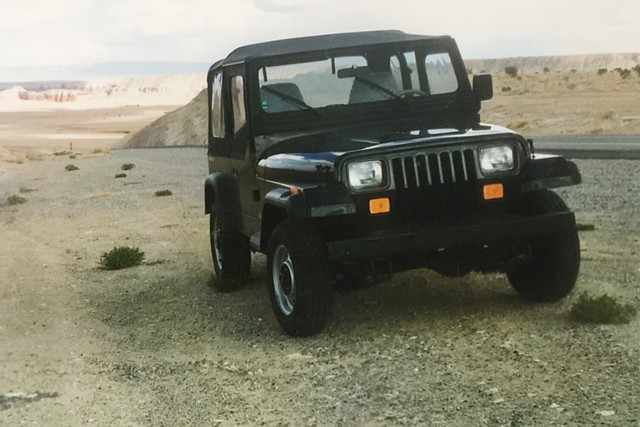
flickr photo shared by cogdogblog under a Public Domain Dedication Creative Commons ( CC0 ) license
The black Jeep I owned in maybe 1996, 1997, somewhere in northern Arizona? New Mexico?

flickr photo shared by cogdogblog under a Public Domain Dedication Creative Commons ( CC0 ) license
Mom says I am the apple of her eye, but will she use the peeler? This is sometime maybe 2008?
This is crazy easy to do. Is it ideal for digitizing?
- As anything, the results depend on the quality of the original. You cannot overcome small photos, scratches, bad exposures in the original.
- Using better light helps, outdoor filtered light would be best.
- The results are not super high rez, mine are about about 1200px – 2000px in the long side.
- Some exposures have casts or just are not sharp. I edited mine as usual to correct color and cropping
- It can do amazing feats with removing the glare from photos under glass.
I would not use this for important photos or things I might need in video work. But for doing some quick web storytelling, or doing some family stories, it is rather compelling.
And it’s better than the box of neglected photos, the ones “maybe one day I will scan”.
Top / Featured Image: flickr photo by me https://flickr.com/photos/cogdog/31058493106 shared under a Creative Commons (CC0) license


Cool. Useful. Besides the 5000 slides of my dad’s I am currently curating, Mom just gave me a big box of prints to go through. This app will be just the thing.
Thanks for the just in time learning moment!
Thanks for the sharing. We have scanned all the slides – took my husband one month and about 36 hours each week. But they are titled, dated, sorted and organized too.
Now we have his parents, my parents, and our own photos. I started scanning – but also found outside of an infrequent 3 second interest, most of the photos without a story with them don’t mean anything to anyone who is alive right now.
Started focusing on the current family members and trying to organize those photos as well as how to organize the many -MANY- ones we all take each day now! It is a constant project- but one of love. I have moved to using my photos app and Flickr as well as a family stories wordpress site and a family YouTube channel. So as I create family gifs, videos, slide shows or just albums they are all there with some of the story.
Hopefully the efforts will be valued some day. Right now the interest is in when first complete and I am the only one who goes back to look at them.
and how did I get to this….thru ds106 of couse! As I did the open course units alongside UMW Noir – I created by using my Dad as my character. So he has posters, a video, some gifs, an audio commercial, logo and more. I am sure someone in the family will enjoy in the future all the artifacts created as they tell the story of the family.
but I went tangental…..THANKS for the tip – it will definitely help with those many albums that keep staring at me to be included in a new story!
I think your described approach, while more work, is better way. When I do flatbed scanning, I do pretty high resolution. For use in a web site, the app images may likely do fine. You will go a lot farther with it if you think about the lighting to you get good exposure. But I’m curious from what other people try.
But put that aside, I am overjoyed to hear this as an impact of ds106. You have been a steady force for a while, and to hear how the creative work fed your family story project is exactly the results we dream of.
Keep making art, thanks Kathy.
I… Uh… Just took photos with my phone. No scanning. Only problem is the shadow of the phone on the photo or if it’s not morning, the reflection of the ceiling light on the photo. So does this tool solve those problems?
P.S. Beautiful hair. U still have the same expression with your eyes 🙂
It solves the glare issue and perhaps the phone shadow, the five photos it uses overlaps, and it seems to compensate or those things. Hard to say w/o trying/
Still it’s more than what the app does. You will always do better with not using direct single light sources that create glare and shadows. Better is, if possible, using diffused natural light from a window, maybe through a curtain or sheet. I do a lot of my photos of objects at my back door where natural light comes in through a screen
When my mother passed away 3 years ago, i took her shoebox of photos dating back to the 40s or 50s to staples in Vancouver (Canada). They scanned them for free (I was told it’s free because most people end up buying stuff like USB sticks and prints and posters). I wonder if Staples USA does that? I wonder if Staples Canada still does that?
I could not find anything online, maybe it was one of those Nice Canadian things? When the task is more a handful and the box full I think the experience of focusing on people from the past is one the reinforces the memories, as a connective experience
right, i separated the photos into piles separated by categories (e.g. travel, family, philippines, canada) and then i’ve slowly started adding metadata! i’ll see if staples.ca still does this scanning for free!
This is really cool and timely as I unpack and repack and try to get serious about some family archiving. I’d love for a Google engineer to give us a behind-the-scenes look at how this product was imagined, developed, and built. We wouldn’t get the whole story because it’s a proprietary process, but I’m fascinated by the precision of the way they’ve imagined the need and the obstacles they had to address. They did a fine job of problem-solving AND problem-finding.